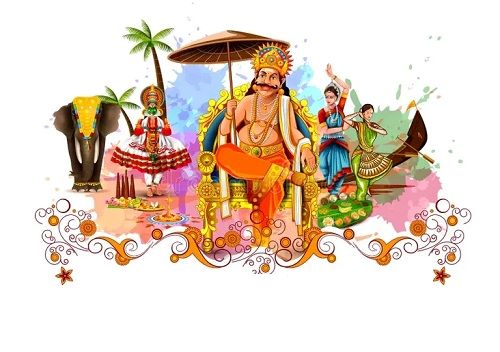


Onam festival weaves generations together through vibrant culture, delicious feasts, and joyous festivities, connecting young and old in shared heritage.
The festive cheers to invite King Mahabali back to Kerala have begun, signaling the start of Onam, the most celebrated festival in the state. Onam, a harvest festival held in the Malayalam month of Chingham, blends cultural heritage with mythology. It’s a time when the entire state, regardless of religion, unites in celebration, reflecting Kerala’s rich history and values.
The Legend of King Mahabali
Onam’s mythology centers around the benevolent King Mahabali, whose rule brought peace and prosperity to Kerala. His generosity is celebrated through a centuries-old song that recounts how people thrived without theft or deceit under his reign. According to legend, Lord Vishnu, impressed by Mahabali’s devotion, tested him by appearing as a dwarf Brahmin named Vamana. Mahabali granted Vamana three steps of land, but Vamana expanded to cover the earth and heavens in two steps. With no more land left, Mahabali offered his head for the third step. Vishnu, moved by Mahabali’s humility, granted him the boon to visit his kingdom once a year, which is celebrated as Onam.
Onam Festivities
Onam marks the end of the monsoon season and the beginning of the harvest. It’s a tribute to farmers’ hard work, with the entire community gathering to celebrate the bountiful harvest. The saying, “Kaanam vittum Onam unnanam” (one must have Onam lunch even by selling one’s land), highlights the festival’s significance.
The ten-day festivities begin with Atham, leading up to the main day, Thiruvonam. On Atham, people start creating intricate floral decorations called Pookkalam, which grow in size each day until Thiruvonam. These designs honor Mahabali and add to the festive atmosphere.
Traditional Attire and Sadhya Feast
Onam is also a time for new clothes, with the traditional kasavu mundu and saree in off-white and gold symbolizing peace and prosperity. The Onam Sadhya, an elaborate feast served on a banana leaf, is an essential part of the celebration. It includes 20 to 30 dishes, reflecting Kerala’s culinary traditions. Uthradam, the day before Thiruvonam, is filled with last-minute preparations and excitement, as Mahabali is believed to arrive on this day.
Games and Pulikali
Traditional games like Vadamvali (tug of war) bring people together, fostering team spirit. Another highlight is Pulikali, a folk-art performance where participants paint themselves as tigers and dance to lively music. Pulikali, performed on the fourth day of Onam, adds a colorful spectacle to the celebrations.
Snake Boat Race
Two days after Chathayam, the Aranmula Vallamkali (snake boat race) takes place in the heritage village of Aranmula. This ancient and revered boat race is deeply rooted in Kerala’s mythology and history, drawing thousands of spectators.
As Onam concludes with Chathayam, everyone bids farewell to King Mahabali, looking forward to next year’s celebrations. Enjoy this Onam with your loved ones, dressed in traditional attire, sharing a grand Sadhya, and cherishing the cultural heritage that defines Kerala. May the year bring you prosperity and harmony!
